Sensing Science through Modeling Matter
Early learners have significant—and highly untapped—potential for understanding abstract concepts and reasoning in sophisticated ways. Research has shown that technology offers powerful support for conceptual science learning in the early grades. The new Sensing Science through Modeling Matter project is developing and researching a technology-enriched curriculum to support learning about matter and its changes at the kindergarten level. We hope that creating a curiosity for science in the early grades is a strong foundation for later STEM learning.
Funded by the National Science Foundation (NSF), the project brings together researchers from Purdue University and the Concord Consortium to pilot model-based inquiry lessons and dynamic technology-based visualizations with over 300 students at four sites in Indiana and four sites in Massachusetts. Building on results from prior projects, we expect to further knowledge about how early learners can create robust conceptual models of the nature of matter. We hypothesize that the use of model-based instruction, if supported by dynamic, technology-based visualizations, holds potential for helping kindergarten students construct a foundational understanding of the particulate nature of matter.
The goals of Sensing Science through Modeling Matter are: 1) revise a curricular unit about matter for kindergarten classrooms, 2) design a parallel curricular unit incorporating technology, and 3) test a series of model-based activities with students for feasibility and maturation effects.
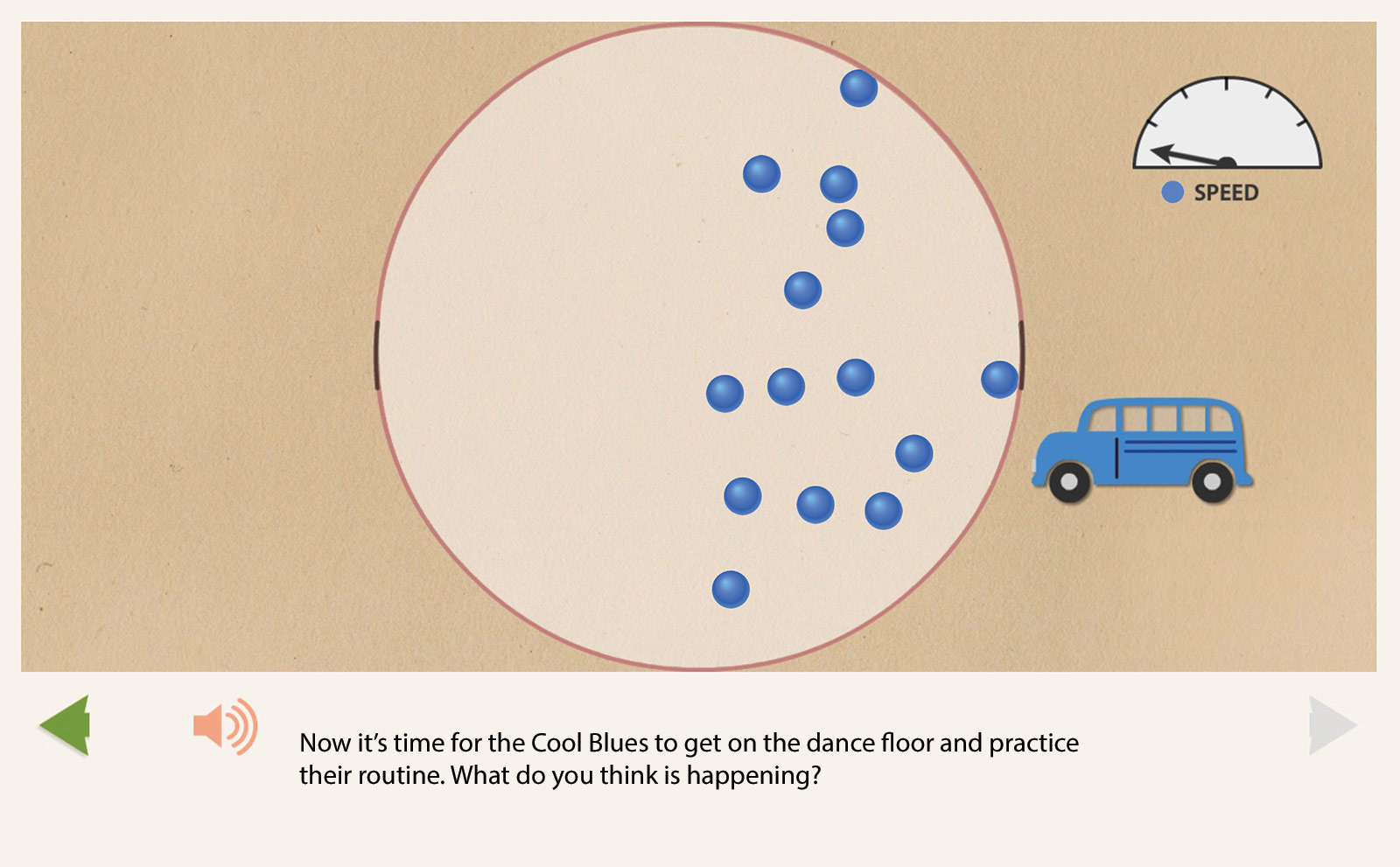
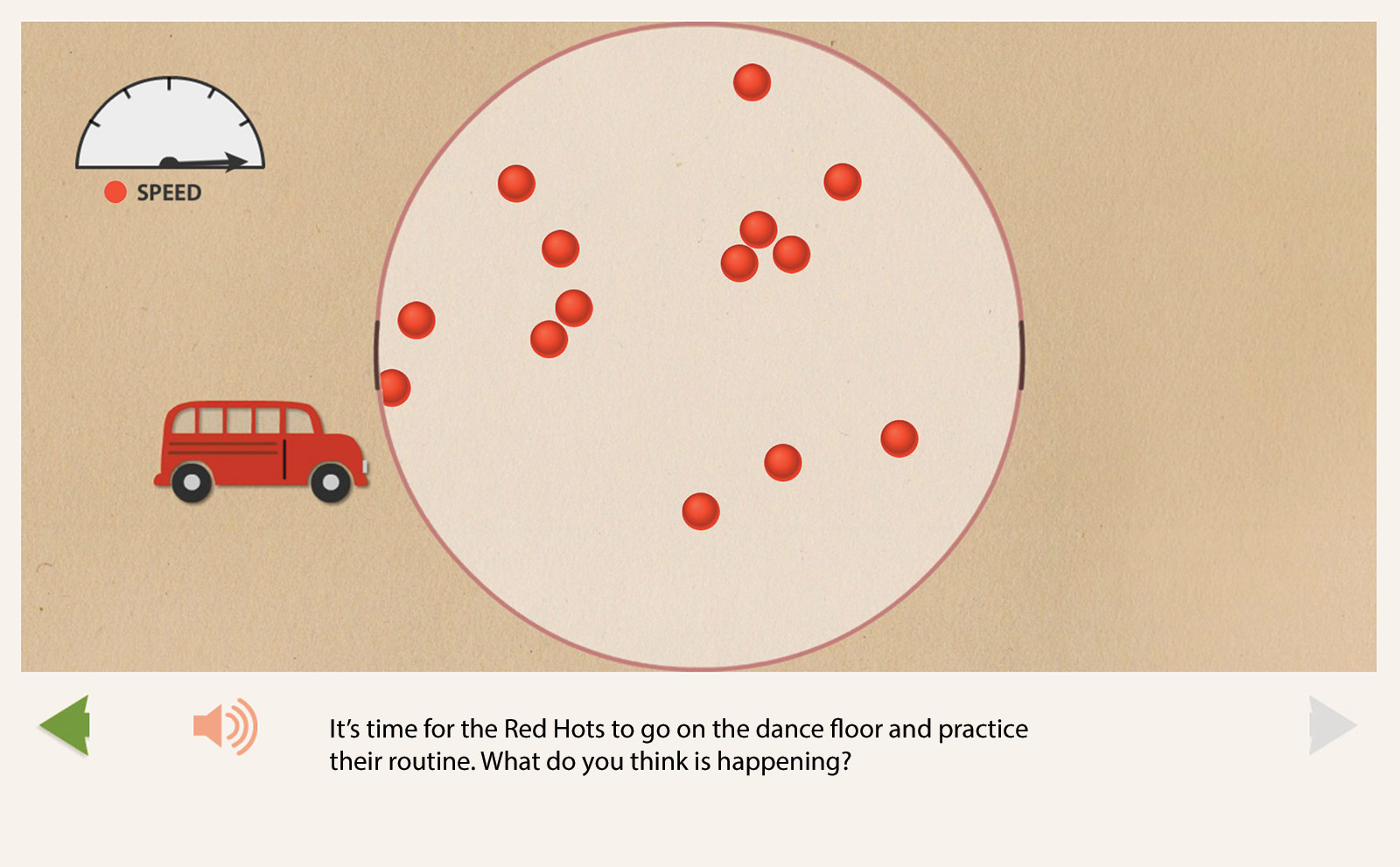
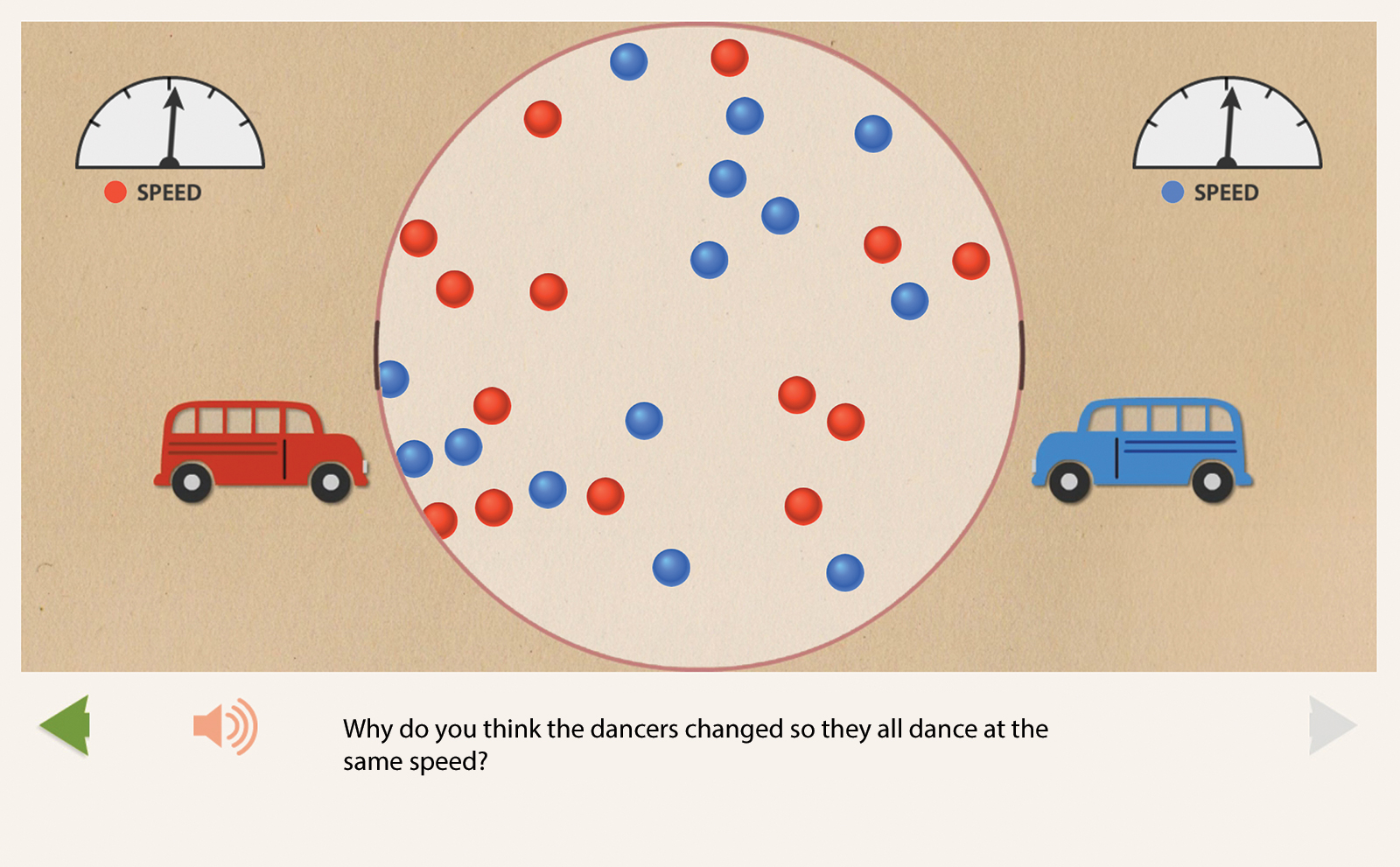
Revise an existing curricular unit about matter for kindergarten students
Our plan is to modify an existing second grade inquiry-based modeling unit developed at Purdue by Co-Principal Investigators Lynn Bryan and Ala Samarapungavan. The NSF-funded Modeling in Primary Grades project demonstrated that the use of a model-based curriculum helps second graders make significant gains in physical science learning, including the ability to articulate increasingly detailed and elaborate explanatory models, as a result of participation in a discourse-rich, inquiry-based physical science curriculum.
Design a curricular unit incorporating technology
Using Principal Investigator Carolyn Staudt and Co-PI George Forman’s prior work and an inquiry-based modeling approach developed at Purdue, we are developing a new unit that will integrate, dynamic technology-based representations. The Sensing Science: Temperature and Heat for Early Elementary Students project at the Concord Consortium established important understandings about the capability of dynamic visualizations to help foster kindergarten students’ thinking about dynamic relationships between heat and energy transfer and the nature and makeup of matter.
During this work, we co-developed an online animated story called The Land of Bump with FableVision (Figure 1). The Land of Bump introduces the motion of particles as related to temperature and energy transfer in an accessible, interactive way. As the “Red Hots” practice on the dance floor, their fast motion is reflected on a speedometer, just as the slower motion of the “Cool Blues” is displayed on a speedometer. Kindergarten through second grade students observed how the Red Hots and Cool Blues mixed while they competed on the same dance floor. The young children were able to describe how bumping resulted in a similar speed for all particles. While not all students could articulate the more complex concepts of heat transfer, conduction, and insulation, the curriculum provided them with the building blocks for later understanding of the kinetic heat model.

2. The Flying Zippies!

2a. Solid
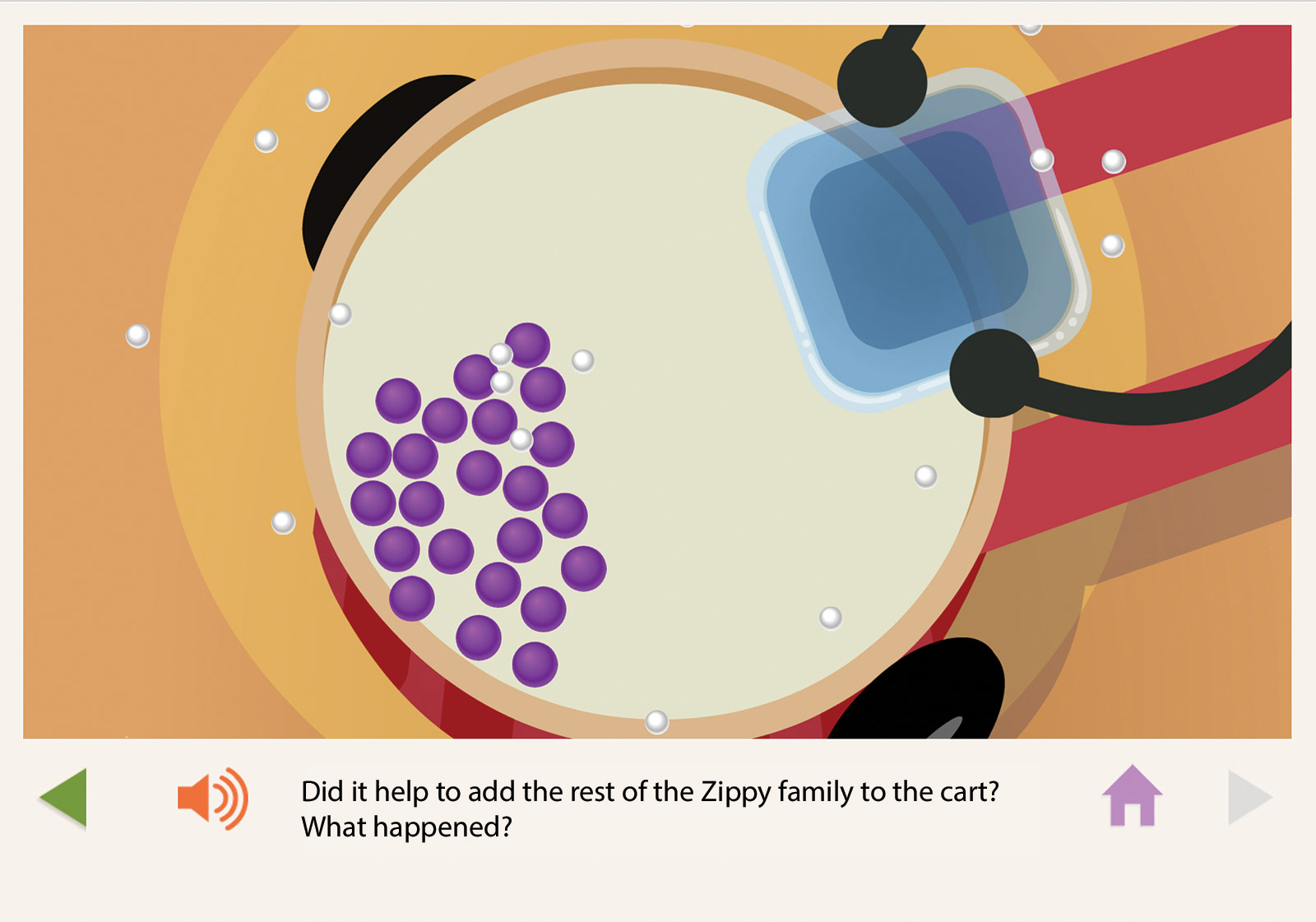
2b. Liquid
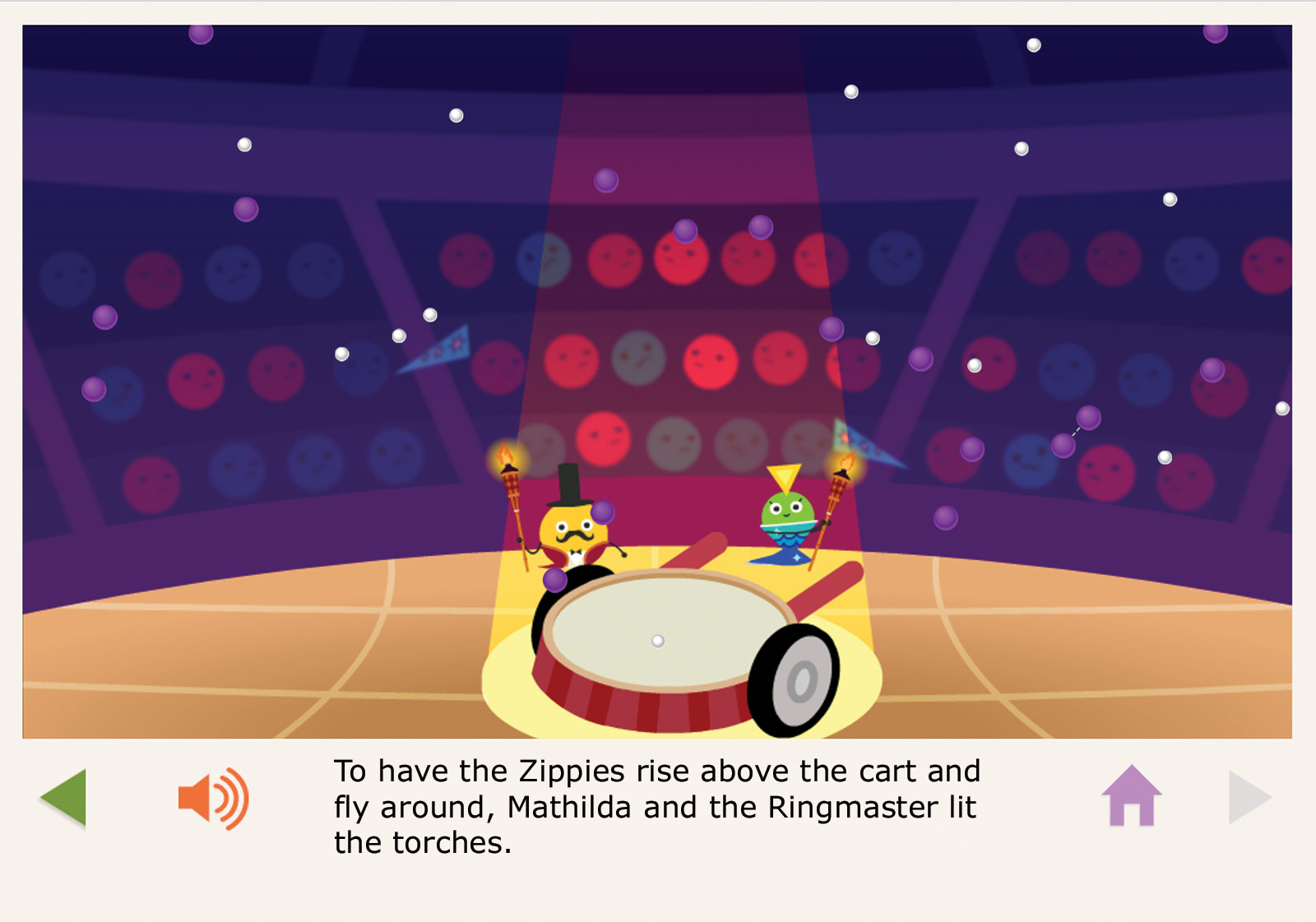
2c. Gas
We are currently creating a new online story called The Flying Zippies, again in collaboration with FableVision (Figure 2). This whimsical online story introduces the world-famous Zippies who perform in the circus. They start out sleeping in the solid state within their dressing room and are excited by faster moving air particles within the Big Top to change into the liquid state. Eventually, warmer air changes them to the gas state and they fly around the circus tent, hence their name—the Flying Zippies!
With this new story, we are researching if kindergarten students will generate representations of the states of matter, including the key idea that all matter is made of particles, and that particles are in motion in all three states—solid, liquid, and gas—though the spacing and extent of motion among particles differ depending on the state of matter.
Test a series of activities for feasibility and maturation effects
Running the activities in classrooms in Indiana and Massachusetts, we will determine how this curriculum can best integrate model-based learning with technology visualizations and will account for any maturation effects exhibited by kindergarten students. Do children start the school year with the relevant cognitive resources to develop an understanding of particulate models or must these resources be developed through instruction?
We are especially interested in understanding how kindergarteners understand and use particulate models to explain physical phenomena such as states of matter and phase changes. Does the use of modeling and technology-based dynamic representations influence kindergarteners’ ability to learn to model physical phenomena? Our goal is to support conceptual, model-based learning of science concepts through technology and build foundational underpinnings in the early grades to support later understanding.
Carolyn Staudt (cstaudt@concord.org) directs the Sensing Science project.
Jamie Broadhead (jamie.broadhead@yahoo.com) is Head of Product Development at Videatives, Inc.
This material is based upon work supported by the National Science Foundation under grant DRL-1621299. Any opinions, findings, and conclusions or recommendations expressed in this material are those of the author(s) and do not necessarily reflect the views of the National Science Foundation.

